



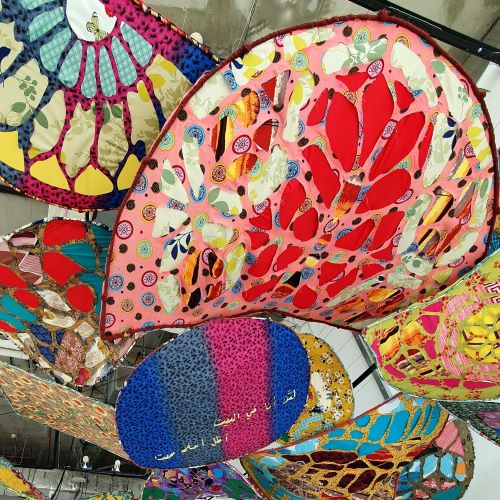
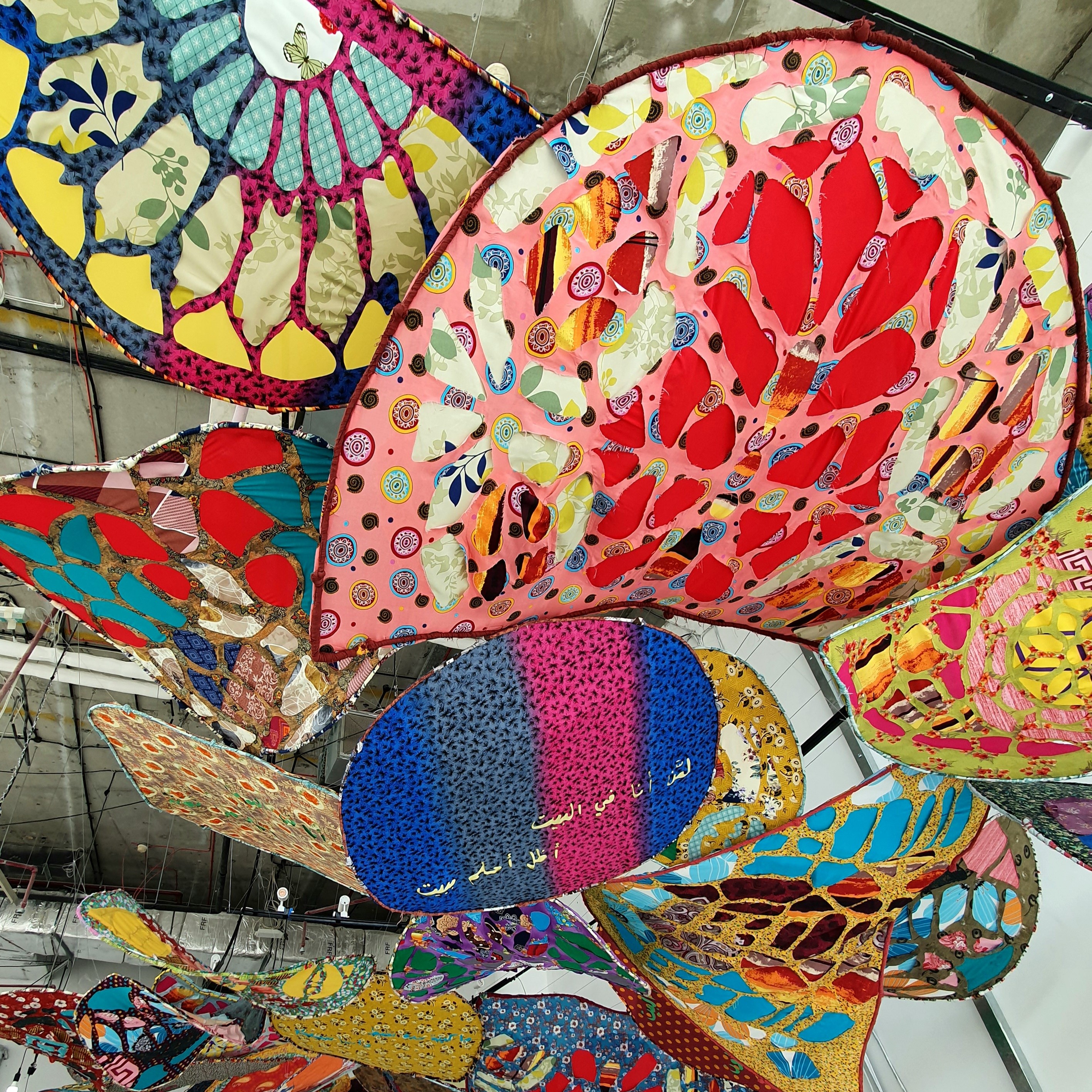 Home Dreaming
Home Dreaming“Ahed Al Kathiri’s work proposes a meaning of home that is constructed from within oneself;
utilising memories that form an intimate connection to her grandmother’s house.”
“Her memories of her grandmother sewing domestic objects from recycled fabric make it an intimate act.
Using these objects always reinforced and maintained the warmth of home. It is therefore an intimate act of sustainability.”
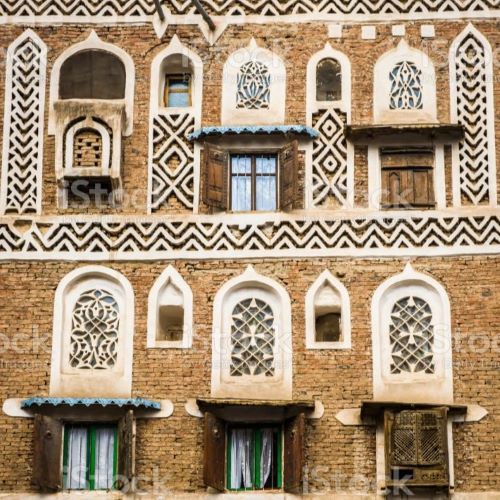 Typical architecture of old Sana'a, showing qamariyat stained-glass windows. Image: UNESCO
Typical architecture of old Sana'a, showing qamariyat stained-glass windows. Image: UNESCO"My mother’s family is from Rada’a in the north but lives in Sana’a now. My father’s family is from Hadramout in the south but most of them live in Dubai now. We used to go to Sana’a every summer but since the war started, we have not been back. I only started working with fabrics in my fourth year. This project is the second in a series that started with a set of abstract pillows made from my grandmother’s clothes. The pillows manifest the warmth and happiness I associate with my grandmother’s house in Yemen. It is also a tribute to my grandmother’s sewing."
It was her grandmother’s custom to leave some of her clothes, usually, traditional dresses called dera, behind when she visited. Partly to pass down items she does not need anymore, and partly to leave a memory or something tangible as a reminder. A dera is a very simple garment made of colourful printed fabric. Depending on the occasion it is intended for, can be richly embellished. The fabrics, mostly imported from Iran, were usually purchased in Aden. Ahed’s grandmother did not always sew her own clothes but bought them from the market or from tailors, but she often repurposed her old dresses into cushion covers and other household goods.“Once I started working with the fabrics, I studied the labels and branding on the fabric. The garments worn by my mother and grandmother were slightly different than those I saw worn by my paternal aunts who hailed from the south.”
“My grandmother did not give a lot of thought to matching the patterns or colours but combined patterns and colours indiscriminately. She was more interested in making things for her home and for us, her grandchildren. I associate this vibrant mix of colours and patterns with her love, her happiness, and her wish to share this joy with us. My memory of Yemen is my memory of my grandmother’s house. That is home to me. My grandmother’s clothes still carry her smell even after it has been washed many times. Cutting it and using it in my art means more to me than donating clothes to other people."
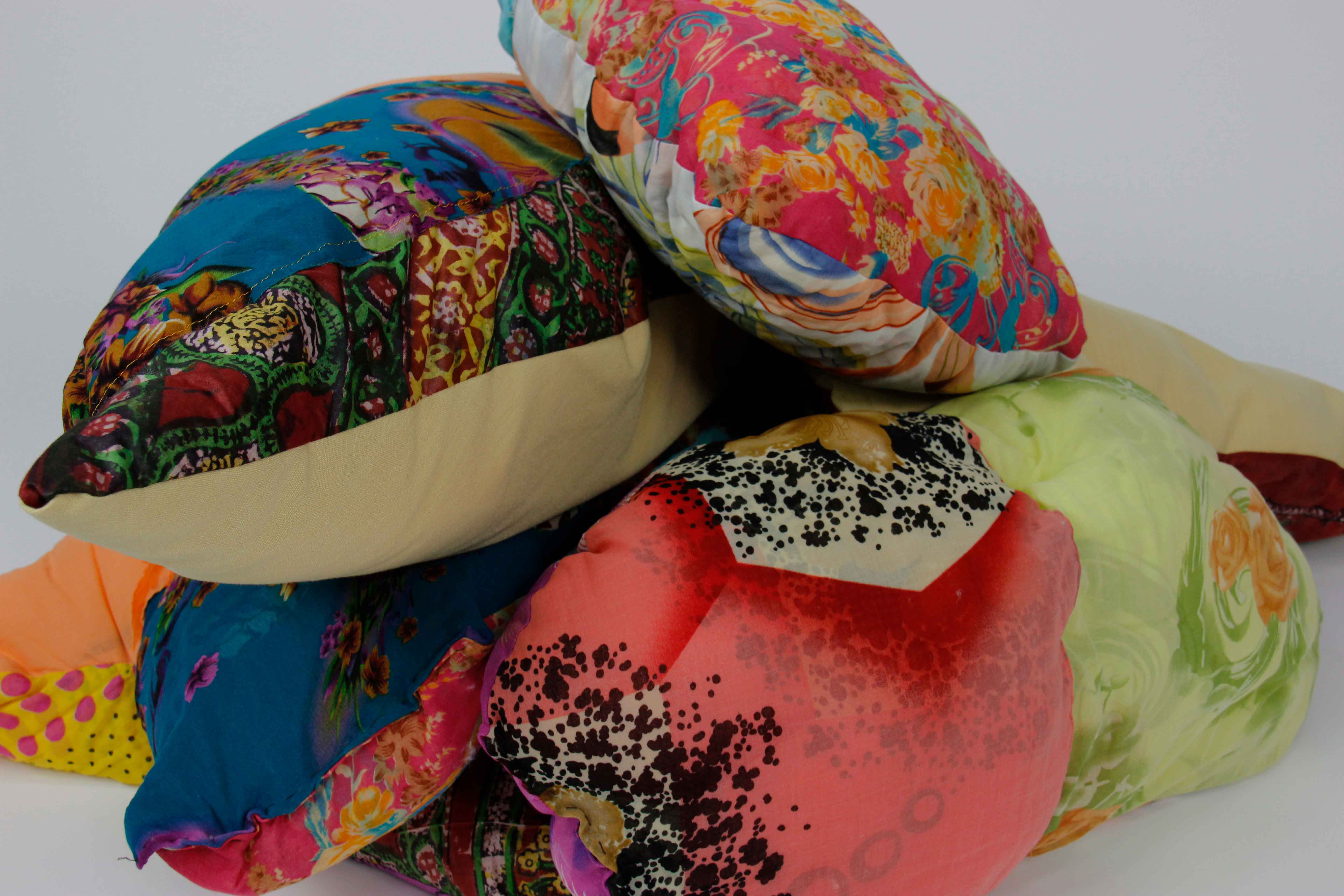 Ahed's first project repurposing her grandmother's clothes
Ahed's first project repurposing her grandmother's clothes"I handsewn layers of fabric onto the metal wire to give me flexibility and room to play with. Some people say it reminds them of butterflies or kites. Yemen is often associated with conflict, but to me, my Yemeni home represents happiness and happy memories. And my grandmother is the essence of my work."
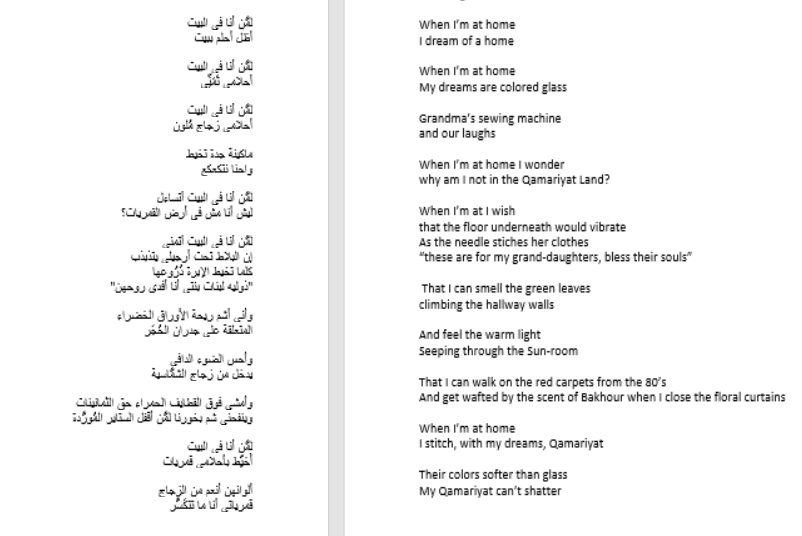 The monologue that inspired Ahed's Home Dreaming installation
The monologue that inspired Ahed's Home Dreaming installation***
Ahed Al Kathiri plans to pursue her master’s degree in fine art in 2023 where she wants to continue exploring textiles. Read more about the traditional dress of Yemen in this insightful series written by Darleen Wilkerson Karpowicz.